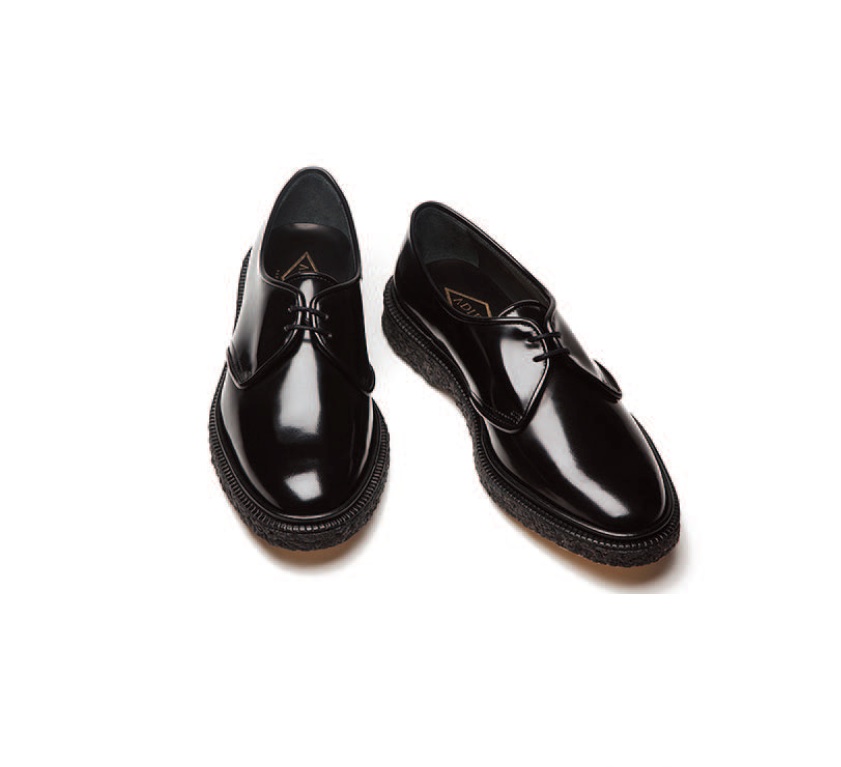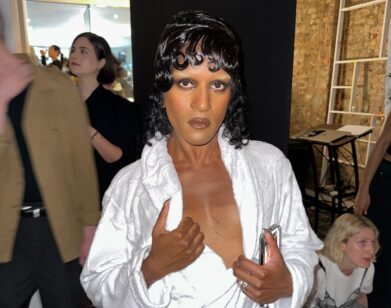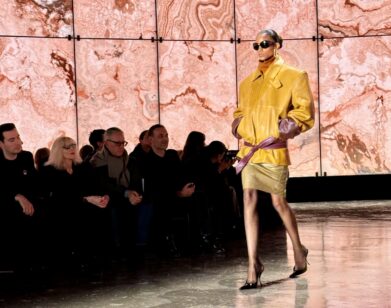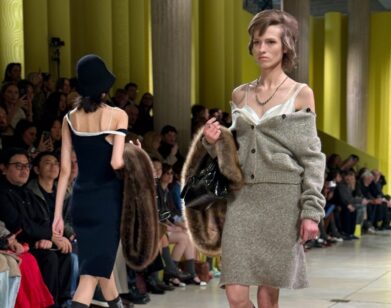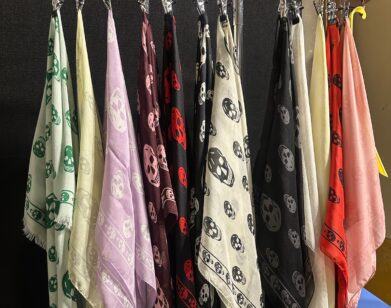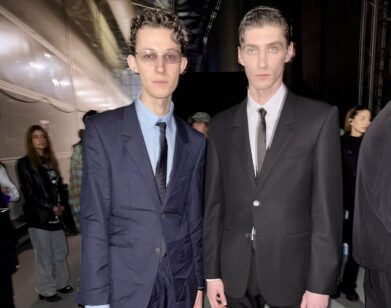Menswear Monday: Adieu
There’s more to menswear than suits and ties. Every other Monday, we’re giving the fastest developing facet of fashion the attention it deserves and introducing the designers, buyers, trendsetters, and stylists you need to know.
Between Isabelle Guédon and Benjamin Caron, the design partnership behind French shoe brand Adieu, the former has the most experience working in the fashion industry. But Guédon, whose résumé includes stints under big names like Alber Elbaz and Christian LaCroix, is also the most skeptical of the industry as a whole. “I think that fashion is a bit crazy with all these collections and pre-collections,” she contends. “Everything is changing every five minutes.” That, she says, doesn’t really fit with the way we consume fashion. “People love to have real classics that aren’t boring,” Guédon offers. “It’s a bit like how, when you find jeans that you like, you always buy the same jeans, and you don’t change every season the brand or the shape or the size of your jeans. They’re your jeans.” Her and Caron’s goal at Adieu is to make shoes as classic and as comfortable as a favorite, perfectly fitted pair of J Brands or Levi’s.
From their storefront on Place des Victoires in Paris, and at stockists like Colette, Dover Street Market and Opening Ceremony, Adieu sells five of the same standard styles in black leather every season, straightfowardly named Type 1, Type 2, Type 3, and so on. These include a loafer, a Derby, two ankle boots, and an Oxford, and they all come with fashionably chunky soles, which add design interest to their quiet, classic forms. Alongside these staples, Caron and Guédon also experiment each season in new designs, materials, and color combinations, like azure suede slippers and woven black Chelsea boots.
These experiments have taken the designers pretty far from the understated essence of their brand, and rewardingly so—their last collection took inspiration from imaginary bowling alleys and rooftop parties in Tokyo—but they say they’ll still always sell their five black mainstays. We got on the phone with Guédon to try to dissect the charming, very French mix of classic and cool that is Adieu.
DESIGNERS: Isabelle Guédon and Benjamin Caron
BASED IN: Paris
ORIGIN STORY: We met when we were very young. I was 13 and Benjamin was 14. It’s now 30 years ago. [laughs] It’s a long story. We’re from the same town in the countryside; it’s on the Atlantic coast in France. I guess we were a bit different from the people there—a bit more taking care of our looks and things like that, so we recognized each other. [laughs] Benjamin was already sketching some shoes when he was young—he was sort of this observational shoe sketcher. And I was fascinated by fashion. So I don’t know, we didn’t plan it when we were so young, but I think we knew we wanted to do this one day. We tried about 20 years ago to make a sort of brand like Adieu, but it was complicated—I think we were too young. At the time, Benjamin was doing handmade sneakers and I was working in fashion, and after that we did some handmade furniture. But we always had that in mind, that we had to do what we really love and make a shoe brand.
TRADEMARKS: The original concept for Adieu was that we really wanted to make iconic shoes—to make classic, popular shoes—and then, suddenly, to give them some novelty, to push them. A French journalist said to us it was like she always knew these shoes, she always needed these shoes, but she just hadn’t found them anywhere before. And we loved that. It’s exactly what we want to do—something that seems so evident and so standard, but in a way it becomes very special, because they become “those” shoes to you, you know?
MIX IT UP: I think what was going on when we launched Adieu—and it’s still happening—is that men are wearing so many sneakers. We wanted to have in our shoes, which are more formal, that sneaker feeling, and we worked really hard to get it. At the same time, we think that men can be bored to always have sneakers and would love to have more classical styles. I think it all goes with this mix between sharp, city design and then casual, more sportswear designs. Nowadays everything gets mixed like that. At the origin, we wanted to make only a men’s shoe brand, and then, when we got samples, we just thought they were so cool for women that we had to make them for both. I think it’s more that everything gets really mixed now. You can have very expensive designer clothes and mix them with H&M and just not care, you know? We have less frontières—less limits. It’s less boring.
DYNAMIC DUO: We have a very good balance with our two brains. [laughs] We have no ego problems on the creative side, first of all. That’s quite rare with designers, but it’s true. It all comes out very organically. At the beginning of a season, I’m the one who looks for inspiration from images and looks for the theme of the collection, and then I give that to Benjamin and he starts sketching some designs but in a really free way. Then I look at it and I take away what I think is not right, and then we get more focused on a specific direction. He sketches more in that direction to build the collection, and at one point when we think we have the designs, I’m the one who works after that on the color combinations and materials and things. And Benjamin says yes, no, and so on. And then at some point we have the collection. [laughs]
REI KAWA-WHO-BO?: Benjamin met Rei Kawakubo once—it was during the showroom, and I was upstairs with my agent doing who knows what. When we came downstairs Benjamin just said to us that there had been this Japanese woman with her husband. He didn’t recognize her, because what’s nice is that Benjamin is really not from fashion and this keeps us very fresh. [laughs] So he didn’t know it was Rei Kawakubo; he just said it was this Japanese woman, very nice and very smart. She had said that she saw a little article with a picture of our store and she wanted to see it in person—and that it was beautiful. And that’s all! It was crazy.
Menswear Monday runs every other Monday. For more, click here.

